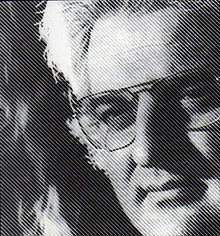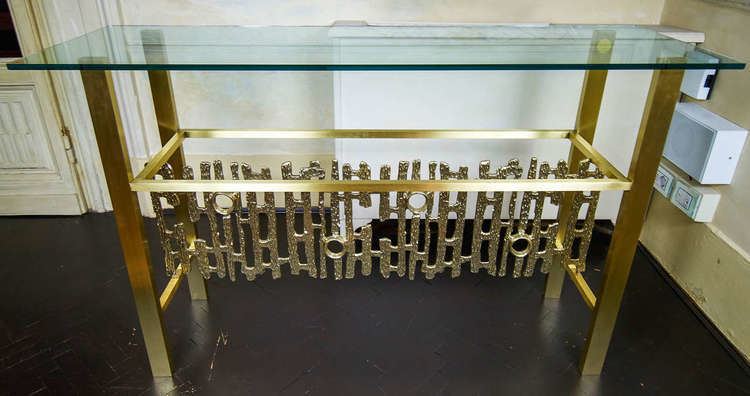Name Luciano Frigerio | ||
 | ||
Died April 11, 1999, Sanremo, Italy Similar People Pope Innocent VIII, Otto II - Holy Roman Emperor, Pope Innocent XII, Pope Clement XIII, Pope Anastasius III | ||
Luciano Frigerio (Desio, 21 May 1928 – Sanremo April 11, 1999), was a designer, artist and Italian musician.
Contents

Biography

Luciano Frigerio was born in Desio in 1928, where his Father Giovanni set up a small workshop of highly crafted cabinet making in 1889, Luciano attended the junior school at the Collegio Paola di Rosa in Desio, where he met his school friend Tommaso Giussani, who later became a Monsignor in his ecclesiastical career .This close friendship and reciprocal esteem for each other grew over the years and he was commissioned by the same Monsignor Giussani in 1982 to make two lecterns for Pope John XXIII, which can still be seen today in the Basilica di S. Pietro e Paolo in Roma, positioned under the altar of Bernini Bernini. Luciano Frigerio completed his technical and administrative studies at the Pio XI College, gaining his diploma of Accounting, while at the same time cultivating and combining his two great passions, which he had had since his adolescence of designing furniture and composing music.
The piano played an important part in his life, meeting up with his musical friends became a real passion, taking along different pieces of jazz music, composing and listening to them, some interpreted and played by the flautist Severino Gazzelloni. In 1977 he was given the title of "Maestro Compositore"( Master Composer) and together with the registration in the Album, he obtained copyrights obtained of his music, which was broadcast on the different RAI channels.
The socio economic reality of Brianza, in those years, offered great entrepreneurial opportunities in the art of furniture. Already in the 1960s it was common to order specialized reading material and magazines focused on the sector from the States. Frequent visits to prestigious craftsmen’s studios like Canturine, where he often met Masters like Gio' Ponti, Franco Albini, Carlo De Carli and Tapio Wirkkala, brought about the transformation of his small family business into a company which was oriented to the International market (Frigerio di desio). In 1973 he was given the honorary title of Commendatore della Repubblica Italiana. One of the staff of technicians who worked in close collaboration with Frigerio helped him to realize his dream, that was to create a piece of furniture which was unique, made by putting together as many excellent materials as possible. From this idea "Mobili Scultura" (furniture sculpture) was born, in solid wood and the headboards for "Letti scultura" (Bed Sculpture) in a fusion of bronze, which created a totally new style, standing out from the industrial production of that era.
Over the years, close collaboration was born with some famous architects and Italian designers like Franco Albini, Sergio Asti and later Paolo Portoghesi. Luciano Frigerio asked them to design some pieces of furniture in order to realize a craftsman’s studio, creating a series of numbered and signed pieces. He was totally convinced that even an architect could design furniture, a unique and highly crafted piece from a cabinet maker and not only furniture on an industrial scale. This philosophy brought about a growth in the company from the 70’s to the 90’s, with the opening of ten showrooms in the biggest Italian cities, one of which was in via Montenapoleone in Milano, where many Haute Culture Fashion Designers had costumier workshops. In 1989 he was nominated Cavaliere dell'Ordine Equestre del Santo Sepolcro di Gerusalemme. Many pieces of furniture designed by Luciano Frigerio are present in important Italian art galleries and abroad. He was recognized on various occasions during the International Italian Furniture Shows from 1975 to 1993, Mobillevante Bari from 1974 to 1983, Abitare il Tempo 1989-90-91-92. NelIn1972: NSID certification of trade membership, the National Society of interior designers[senza fonte].Permanent exhibition Milano: Galleria del Sagrato 1959-1963, Permanent exhibition Galleria Vittorio Emanuele 1964* 1967, Permanent exhibition "Art Gallery" via Montenapoleone 1968-1989. He died in Sanremo in1999.
